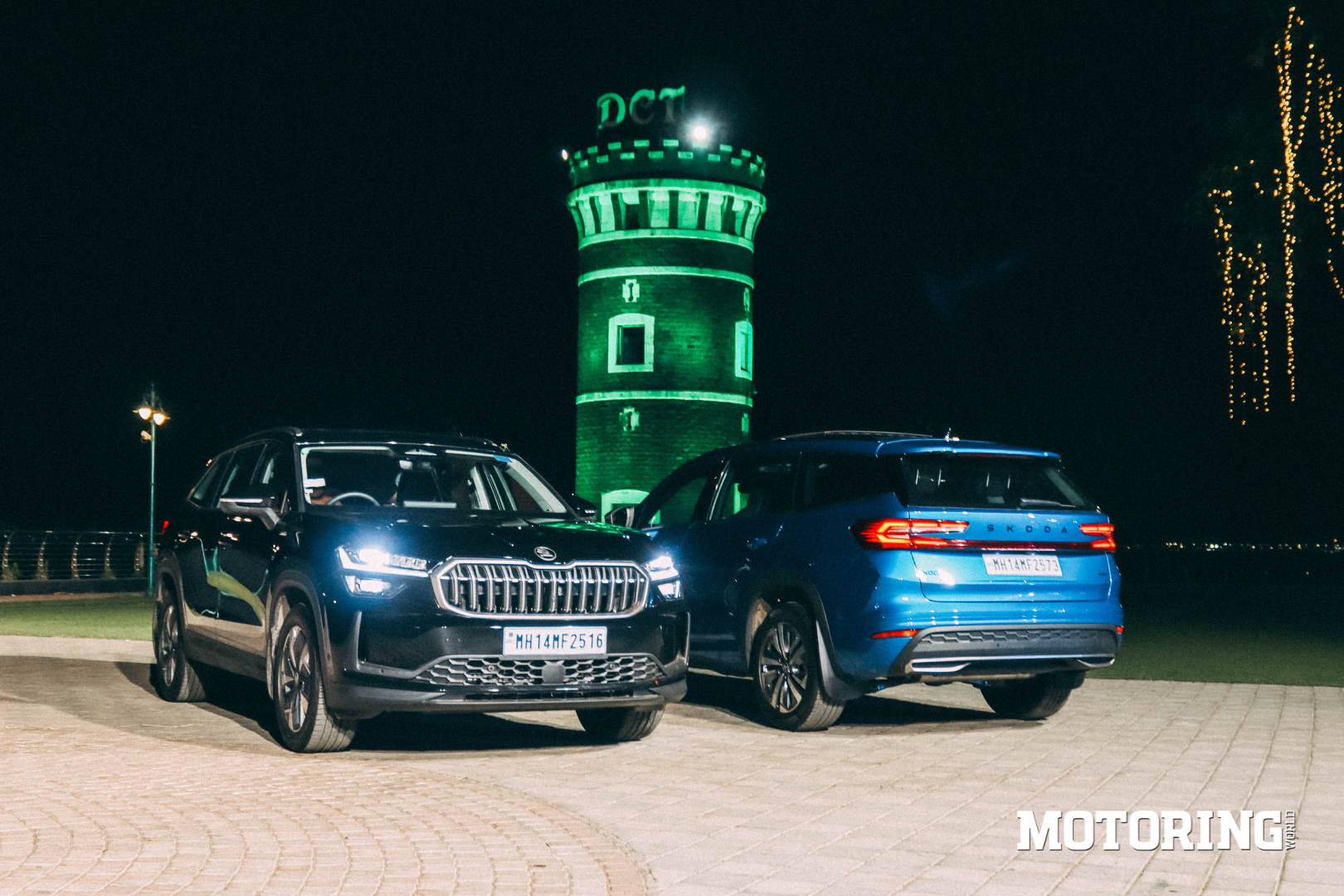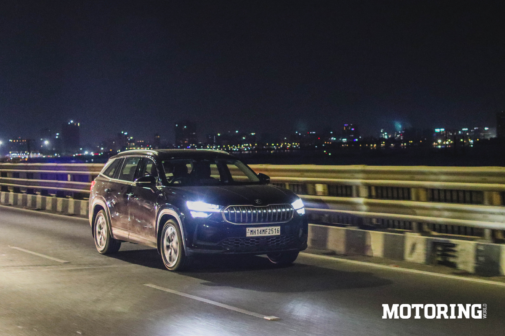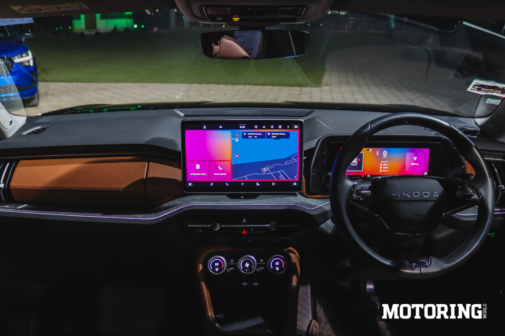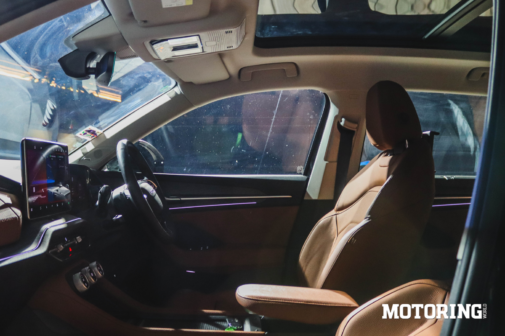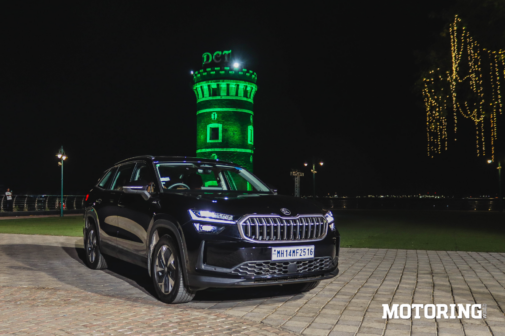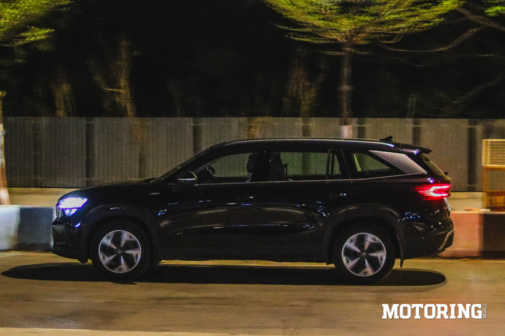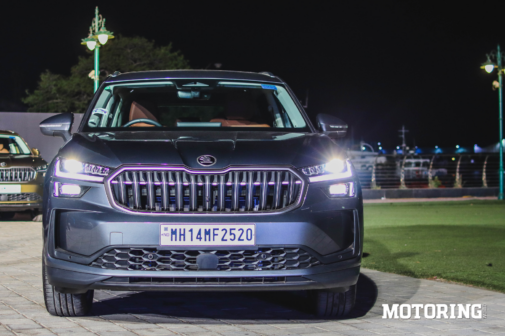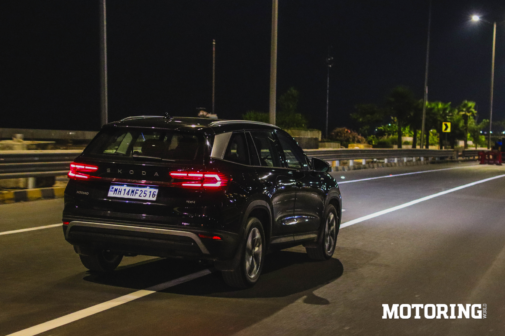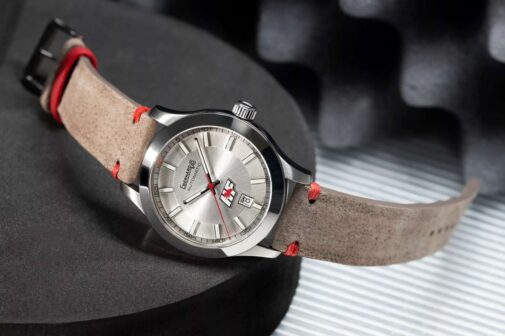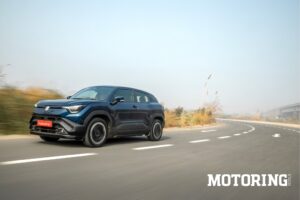Photographs by Shreyansh Chatterjee
The Kodiaq is back, but Skoda’s relaunch of the new-generation car wasn’t a standard press event but a detour from the usual automotive unveilings. Rather than ushering journalists through the traditional drill of airport pickups, hotel check-ins, and conference-room briefings, Skoda staged an overnight experience that concluded with the unveiling of their refreshed SUV aboard a yacht, gently rocking in the glow of Mumbai’s moonlit harbour. It was a refreshing change from the routine, mirroring Skoda’s quiet confidence in the vehicle it was about to showcase. With Mumbai’s sparkling skyline as the backdrop and the Arabian Sea adding natural ambience, the yacht-based deep dive into the Kodiaq’s technical evolution felt more like a private screening than a product reveal.
After the maritime briefing, where we returned to land, each handed the keys to the all-new Kodiaq. What followed was an unorthodox drive experience: a nocturnal journey across Mumbai. For me, this came with a sense of déjà vu. Half a year ago, I had put the previous-gen Kodiaq through its paces in off-road conditions, pitting it against more rugged SUVs. It had held its own then, and my expectations for the new model were anchored in that solid memory. Skoda’s reputation for sturdy, well-engineered vehicles — often with understated charm — sets a high benchmark.
Climbing into the updated cabin, you notice a thoughtful evolution rather than a radical redesign. The most striking change is the relocation of the drive selector. The chunky gear lever on the centre console is gone, replaced by a minimalist toggle switch on the steering column. This shift not only aligns with modern design trends but also frees up space, now cleverly utilised for dual wireless charging pads. It’s a smart move, especially in a world where phones double as wallets, keys, and lifelines. Unlike the lone charger many rivals offer, Skoda’s setup accommodates both driver and passenger without compromise. Still, there’s a tactile loss here. The new selector lacks the mechanical satisfaction of the older gear lever. Gone, too, is the subtle ‘DSG’ lettering, once a marker of the car’s dual-clutch pedigree. The toggle works, no doubt, but it’s more clinical than charismatic — a bit of charm traded for tech.
Skoda currently offers the Kodiaq in two trims — Sportline and the more feature-rich Laurin & Klement (L&K). Our night with the L&K revealed a cabin that’s both modern and opulent. The digital instrument cluster is crisp, the 12.9-inch touchscreen infotainment system feels snappy and smartphone-inspired, and the two-spoke steering wheel returns as a Skoda signature. Creature comforts abound — power-adjustable seats with memory, a 360-degree camera, multiple drive modes, and an expansive panoramic sunroof that adds an airy, premium vibe. Seat support has improved too, both in the front and middle rows. The third row remains tight for full-sized adults on long trips, but is usable when needed. Folding the rear seats flat liberates generous boot space, making the Kodiaq as practical as it is plush. Thoughtful touches like a built-in screen-cleaning cloth and automatic door edge protectors continue Skoda’s tradition of ‘Simply Clever’ features. It’s this attention to detail that reinforces the brand’s appeal.
As we began our drive, the Kodiaq’s demeanour stood out. Despite its size, it felt nimble and approachable. The steering was light and accurate, making city navigation a breeze. One minor hiccup? The electronic parking brake felt a touch abrupt, lacking the progressive ease expected from a car this polished. Perhaps it’s a new-car trait, something that smooths out over time. That aside, the MQB EVO platform — the Volkswagen Group’s modular marvel — remains the Kodiaq’s backbone. It lends the SUV a well-balanced character, allowing it to transition effortlessly between crawling city commutes and open highway stretches. The structure feels taut yet forgiving, reassuring in every condition.
As we hit Marine Drive, the city’s iconic coastal road, the Kodiaq came alive. This stretch, curving gracefully alongside the sea, offered a perfect stage for higher-speed assessments, and the SUV didn’t disappoint. The 2-litre turbocharged petrol engine, pushing out 201 bhp and 32.63 kgm of torque, felt eager and refined. Paired with the seamless 7-speed DSG gearbox and all-wheel drive, it offered clean, brisk acceleration, especially in Sport mode. Throttle response sharpened, and the transmission held gears just long enough to feel involving without being intrusive. What impressed most was its composure — no torque steer, no unnecessary drama. Just confident, linear acceleration that made the Kodiaq feel lighter than it is.
And that’s the great thing here. For a three-row SUV, the Kodiaq moves with grace. It doesn’t pretend to be a hot hatch, but it handles with poise. Body roll is minimal, its ride quality is balanced, and road imperfections are absorbed without fuss. This is a family hauler and a highway cruiser that won’t leave you yearning for something sportier.
Fuel efficiency, though not the night’s primary focus, surprised us. The real-time figures hovered between 14–17 kpl, commendable for a petrol SUV of this size. Whether pushing it a bit or coasting comfortably, the Kodiaq struck a balance between performance and prudence. Still, the enthusiast in me couldn’t help but daydream. Imagine this platform with a performance-tuned VRS variant, maybe in Skoda’s signature neon green or yellow. Even a limited run would send ripples through the enthusiast community — a Kodiaq VRS would be a bold, niche offering, but one that could earn cult status.
That daydream gained traction recently when Skoda showcased a diesel-powered Kodiaq at the 2025 Auto Expo; the buzz was immediate. Indian buyers still hold a torch for Skoda’s old diesel engines — tough, efficient, and seemingly indestructible. A diesel Kodiaq would tick many boxes for long-distance travellers and fleet buyers alike. The question isn’t if Skoda should bring it; it’s when they will.
As dawn neared, we parked the Kodiaq against Mumbai’s glittering skyline. Even in black, the new illuminated grille made a statement. The tail lights are more defined, and the revised rear quarter gives the SUV a slightly more muscular profile. The design tweaks aren’t radical, but they’re effective. Walk away, and you’ll still glance back. Official pricing is pending, but we expect a range between Rs 44 lakh and Rs 55 lakh (ex-showroom), going right up against the newly-launched Volkswagen Tiguan R-Line. At that price, the new Kodiaq offers a very well-rounded package — more refined, more connected, and just as practical as before.
It remains a top pick for urban buyers looking for a premium SUV experience, with room for the whole family. For those with a diesel wish-list, the horizon looks hopeful. Until then, the petrol Kodiaq does a fine job of balancing everyday usability with an occasional dose of driving pleasure.





